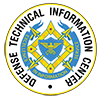Applications include electric vehicles, consumer electronics, UAVs, and wind and solar energy storage.
A novel 3D Li-S battery was developed that is based on a tri-layer solid-state electrolyte structure. The battery consists of three components: a tri-layer solid-state electrolyte, cathode, and lithium metal anode. The tri-layer solid-state electrolytes have a supported thin-film dense layer in the middle, and a thicker porous scaffold support layer on the cathode side and anode side. The porous scaffold on the cathode side is designed to host sulfur-based materials, and Li metal is infiltrated into the pores of the anode scaffold. This highly porous scaffold provides a large interface area to enable better contact with the cathode and anode, which can significantly decrease cell impedance. This solid-state Li-S battery can effectively increase the energy density of batteries, and prevent lithium dendrite penetration through the dense solid-state electrolyte.


